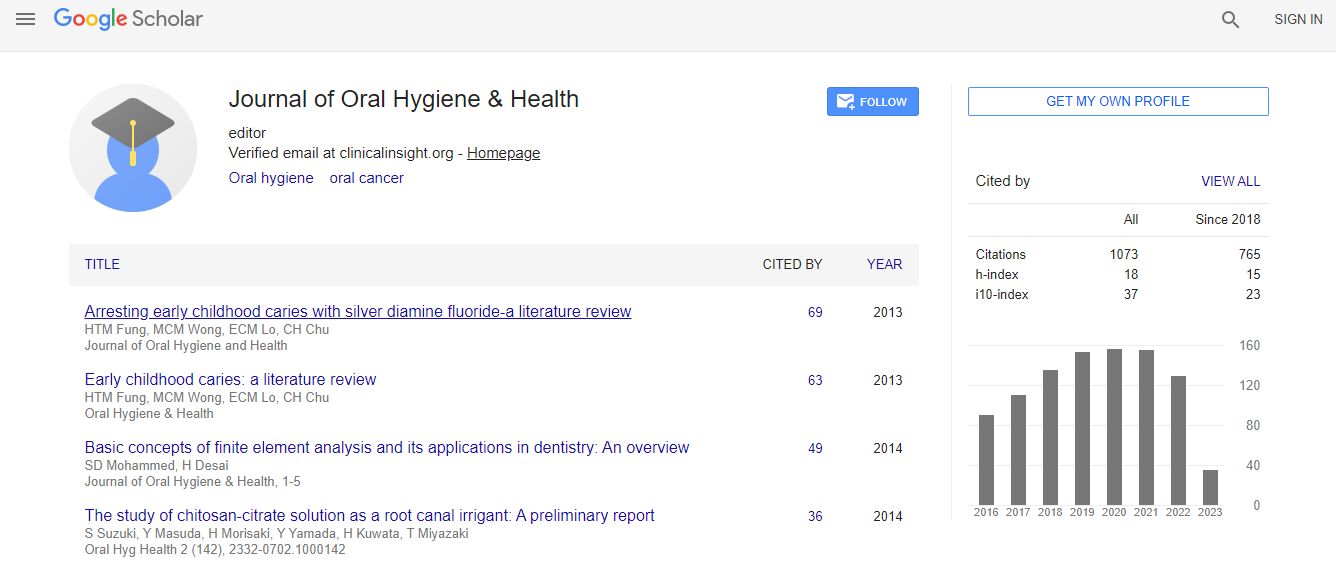Research Article
Psychosocial and Skill-based Differences between Dental and Dental Hygiene Students Regarding Secondary Prevention of Eating Disorders
Rita D. DeBate1*, Deborah Cragun1, Herbert H Severson2, Jennifer Bleck1, Tegwyn Brickhouse3, Debra Heysek4 and Kim Isringhausen5
1Department of Community & Family Health, College of Public Health, University of South Florida, USA
2Deschutes Research, Inc., USA
3Department of Pediatric Dentistry, School of Dentistry, Virginia Commonwealth University, USA
4Department of Dental Hygiene, Hillsborough Community College, USA
5Oral Health Promotion and Community Outreach, School of Dentistry, Virginia Commonwealth University, USA
- *Corresponding Author:
- Rita D. DeBate
Department of Community & Family Health
College of Public Health University of South Florida
13201 Bruce B. Downs Blvd, Tampa, FL 33612, USA
Tel: 813-974-6683
Fax: 813-974-5172
E-mail: rdebate@health.usf.edu
Received Date: January 02, 2014; Accepted Date: March 11, 2014; Published Date: March 15, 2014
Citation: DeBate RD, Cragun D, Severson HH, Bleck J, Brickhouse T, et al. (2014) Psychosocial and Skill-based Differences between Dental and Dental Hygiene Students Regarding Secondary Prevention of Eating Disorders. J Oral Hyg Health 2:123. doi:10.4172/2332-0702.1000123
Copyright: © 2014 DeBate RD, et al. This is an open-access article distributed under the terms of the Creative Commons Attribution License, which permits unrestricted use, distribution, and reproduction in any medium, provided the original author and source are credited.
Abstract
Objective: A long-standing challenge in oral health education is preparing dental and dental hygiene students to address oral/systemic health issues with their patients, particularly regarding sensitive topics such as eating disorders. Oral health providers can play a key role in secondary prevention through early identification and referral of patients exhibiting signs of disordered eating behaviors. Dental and dental hygiene academic competencies include prevention counseling, health promotion, and interpersonal and communication skills, but there are differences across these groups in terms of whether they address oral signs of disordered eating behaviors with their patients.
Methods: As part of a larger prospective study, the current study sought to determine the extent to which psychosocial and skill-based factors differ among dental and dental hygiene students in order to guide changes to academic training. A baseline Likert-type questionnaire was completed by dental (n=476) and dental hygiene (n=190) students from 27 oral health classes at 10 accredited dental and dental hygiene schools across the United States. Pretest data were analyzed to determine whether significant baseline differences exist between dental and dental hygiene students. Hierarchical linear models (HLM) were conducted using restricted maximum likelihood estimation.
Results: No statistically significant differences between dental and dental hygiene students regarding knowledge of eating disorders and related oral manifestations. However, as compared with dental students, dental hygiene students were more likely to perceive they have a role in secondary prevention of eating disorders but reported less knowledge regarding appropriate procedures for secondary prevention and report higher self-efficacy regarding secondary prevention behaviors.
Conclusion: Implications include the need for multi-disciplinary training for preparing dental and dental hygiene students to address sensitive oral/systemic health issues such as eating disorders with their patients.

 Spanish
Spanish  Chinese
Chinese  Russian
Russian  German
German  French
French  Japanese
Japanese  Portuguese
Portuguese  Hindi
Hindi 
